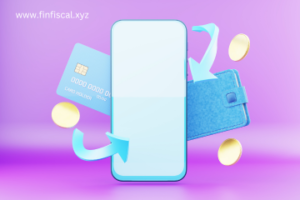Introduction
Mobile banking has transformed the way we manage our finances, offering unprecedented convenience and accessibility. As we move further into 2024, it’s important to weigh the benefits and drawbacks of mobile banking to make informed decisions about our financial practices.
Pros of Mobile Banking

- Convenience and Accessibility Mobile banking provides 24/7 access to your accounts, allowing you to manage your finances from anywhere at any time. Whether you need to check your balance, transfer funds, or pay bills, all can be done with a few taps on your smartphone.
- Time-Saving By eliminating the need to visit a physical bank branch, mobile banking saves time. Tasks such as depositing checks, transferring money, and even applying for loans can be done quickly and efficiently through mobile apps.
- Enhanced Features Mobile banking apps often come with features that enhance financial management. These can include spending trackers, budget tools, and alerts for unusual account activity, helping users stay on top of their finances more effectively.
- Environmental Benefits With fewer paper statements and reduced need for physical travel to bank branches, mobile banking has a smaller environmental footprint compared to traditional banking methods.
- Cost Efficiency Mobile banking can be more cost-effective for both banks and consumers. Banks save on overhead costs associated with maintaining physical branches, which can lead to lower fees for customers. Additionally, some online banks offer higher interest rates on savings accounts due to their reduced operational costs (The Money Manual).
Cons of Mobile Banking

- Security Risks While mobile banking apps are designed with security in mind, they are not immune to cyber threats. Users must be vigilant about safeguarding their personal information, using strong passwords, and being cautious of phishing attempts and malware.
- Technical Issues Mobile banking is dependent on technology. Issues such as app crashes, server downtime, or poor internet connectivity can hinder access to your accounts. Additionally, not all apps are user-friendly, which can be frustrating for less tech-savvy individuals .
- Limited Personal Interaction Mobile banking lacks the personal touch of traditional banking. While customer support is available through chat or phone, some users may miss face-to-face interactions and personalized service provided by bank tellers and advisors.
- Limited Services Certain banking services, such as notarizing documents or handling complex financial transactions, may still require a visit to a physical branch. Users who frequently need these services might find mobile banking insufficient for all their needs.
- Digital Divide Not everyone has access to the technology needed for mobile banking. Those without smartphones or reliable internet access, often older adults or low-income individuals, may find mobile banking inaccessible.
Also Read: Real Estate Investment Strategies: How to Profit from Property
Conclusion
Mobile banking in 2024 offers numerous advantages, including unparalleled convenience, time savings, and enhanced financial management tools. However, it’s essential to be aware of the potential drawbacks, such as security risks, technical issues, and the lack of personal interaction. By understanding both the pros and cons, users can make informed decisions about incorporating mobile banking into their financial routines. As technology continues to evolve, so too will the landscape of mobile banking, making it crucial to stay informed and cautious in managing digital finances.
